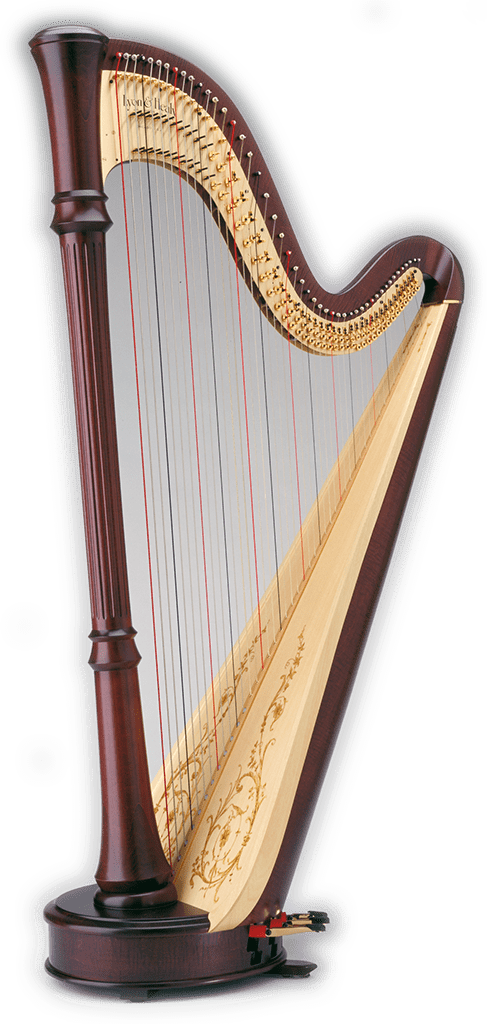Moring, F. Delores, Carol of the Bells |
 |
 |
|
|
| Easy arrangement for solo lever or pedal harp of traditional carol |
| 3 Available |
The winter favorite "Carol of the Bells." Arranged for lever or pedal harp. Advanced beginner level. A simple but lovely arrangement in the key of G minor. Playable on a 32 string lever harp, or fewer strings with some octave transpositions. 2 pages. |
|
|
The winter favorite "Carol of the Bells." Arranged for lever or pedal harp. Advanced beginner level. A simple but lovely arrangement in the key of G minor. Playable on a 32 string lever harp, or fewer strings with some octave transpositions. 2 pages. |
|
|
Pool, Ray, Carols from Around the World Volume 1 |
 |
 |
|
|
| Carols from Around the World Volume 1 |
| 3 Available |
A collection from harpist Ray Pool of ten Christmas carols from five nationalities: Austria, Czechoslovakia, England, Ireland and Poland. |
|
|
A collection from harpist Ray Pool of ten Christmas carols from five nationalities: Austria, Czechoslovakia, England, Ireland and Poland. |
|
|
Pool, Ray, Carols from Around the World Volume 2 |
 |
 |
|
|
| Carols from Around the World Volume 2 |
| 2 Available |
A collection from harpist Ray Pool of ten Christmas carols from five nationalities: Austria, Czechoslovakia, England, Ireland and Poland. |
|
|
A collection from harpist Ray Pool of ten Christmas carols from five nationalities: Austria, Czechoslovakia, England, Ireland and Poland. |
|
|
Sullivan, David, Celtic Harp on the Prairie |
 |
 |
|
|
| Celtic Harp on the Prairie |
| 3 Available |
This book was put together to express Mr. Sullivan's affection for the many wonderful tunes that came out of nineteenth century America. Many of the pieces are well known, but deserved a fresh setting that would be playable on the harp. A few tunes are less well known, or even obscure, but were chosen for their artful melodies. The arrangements translate well on the piano as well as the harp, and Mr. Sullivan also includes guitar chords and lyrics. You'll revive the "Parlor Tradition" of days gone by and make these old tunes live again is part of your own musical tradition. There is a brief historical paragraph on each tune, and a lovely picture. One interesting piece is the "Persian Princess Waltz." It is from a 1901 method book for the reed organ. This method book was discovered in Mr. Sullivan's garage and was autographed by the author, Mattie Pirtle, whose picture is on the back cover of the book.
|
|
|
This book was put together to express Mr. Sullivan's affection for the many wonderful tunes that came out of nineteenth century America. Many of the pieces are well known, but deserved a fresh setting that would be playable on the harp. A few tunes are less well known, or even obscure, but were chosen for their artful melodies. The arrangements translate well on the piano as well as the harp, and Mr. Sullivan also includes guitar chords and lyrics. You'll revive the "Parlor Tradition" of days gone by and make these old tunes live again is part of your own musical tradition. There is a brief historical paragraph on each tune, and a lovely picture. One interesting piece is the "Persian Princess Waltz." It is from a 1901 method book for the reed organ. This method book was discovered in Mr. Sullivan's garage and was autographed by the author, Mattie Pirtle, whose picture is on the back cover of the book.
|
|
|
Hazzard, Peter, Ceremonial Wedding Music for Flute and Harp |
 |
 |
|
|
| Ceremonial Wedding Music for Flute and Harp |
| 1 Available |
This work, composed by Peter Hazzard, is a lovely original selection for flute and intermediate pedal harp. The work incorporates influences from Klezmer music because it was premiered as part of a wedding ceremony where the groom was Jewish. Although these elements make this work suited for performance as part of Jewish wedding ceremonies, it would also sound lovely during any denomination of wedding ceremony, or as part of a chamber music concert. |
|
|
This work, composed by Peter Hazzard, is a lovely original selection for flute and intermediate pedal harp. The work incorporates influences from Klezmer music because it was premiered as part of a wedding ceremony where the groom was Jewish. Although these elements make this work suited for performance as part of Jewish wedding ceremonies, it would also sound lovely during any denomination of wedding ceremony, or as part of a chamber music concert. |
|
|
|


